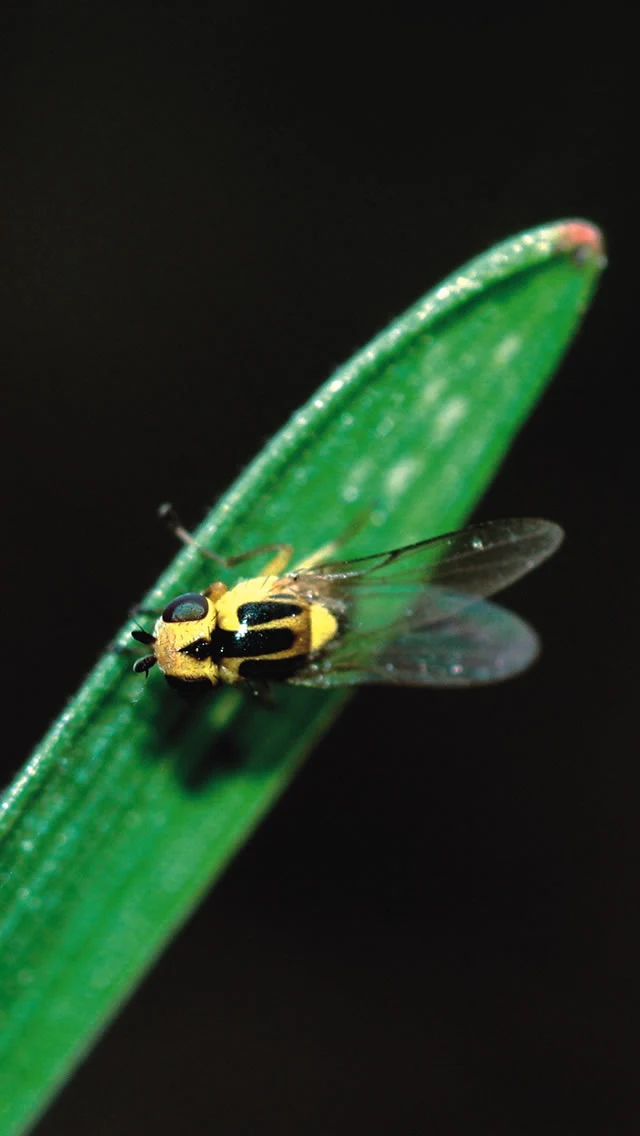
Gout Fly
Chlorops pumilionis
Identification
Adult flies are small, up to 5 mm long with distinctive black stripes and yellow markings. The maggots are yellowish/white, legless and up to 6 mm long.
Symptoms
In spring sown crops at the tillering stage, the stems and tillers can become stunted and swollen, or ‘gouty’, and fail to produce ears. Winter sown crops can have individual tillers with the same symptoms but the plant can compensate via the remaining surviving tillers. Tillers affected by gout fly maggots tend to develop a yellow appearance and often the leaf tips have a torn or ragged appearance. The severity of the damage depends upon the crop growth stage when the maggots tunnel into the plant shoots. Crops are most at risk in spring if invasion occurs after stem extension and before flag leaf emergence as the main stems can fail to produce ears.
Life-cycle
The adult gout flies are active in May to June. The eggs are up to 1 mm long, oval and white and are laid singly on the upper leaf surface of wheat, barley, rye and some species of grass. These are very conspicuous and can be readily seen with the naked eye. After a period of 8-10 days the eggs hatch and the maggots tunnel into the main tillers and stems. When fully fed the maggots pupate within the plants. The pupae are orange/brown in colour with a darker ‘head’ end.
There are 2 generations per year. The first generation of adults lays eggs in May and early June and the second generation lays eggs on winter cereals in late August to September. The maggots emerging from this latter generation can live and feed on the host plants throughout the winter.
Importance
Reports of gout fly affecting crops have become more common in recent seasons. Infected shoots and tillers can readily be seen in crops of wheat, barley and rye (oats and maize are not affected), although these can look quite damaging they rarely cause economic loss.
Threshold
ADAS threshold is eggs on 50 % of plants for winter crops. There is no threshold for spring sown crops.
Some organisations monitor populations by using sticky traps to give an indication of relative numbers of adults. A range of figures for economic thresholds have been put forward which suggest that crops could be worth protecting with an insecticide if 25 % plants or 50 % tillers are infected or if eggs are found on 50 % plants. Seed treatment insecticides can provide some limited protection from gout fly attack.
Decis applied for the control of BYDV can also give reduced gout fly damage.
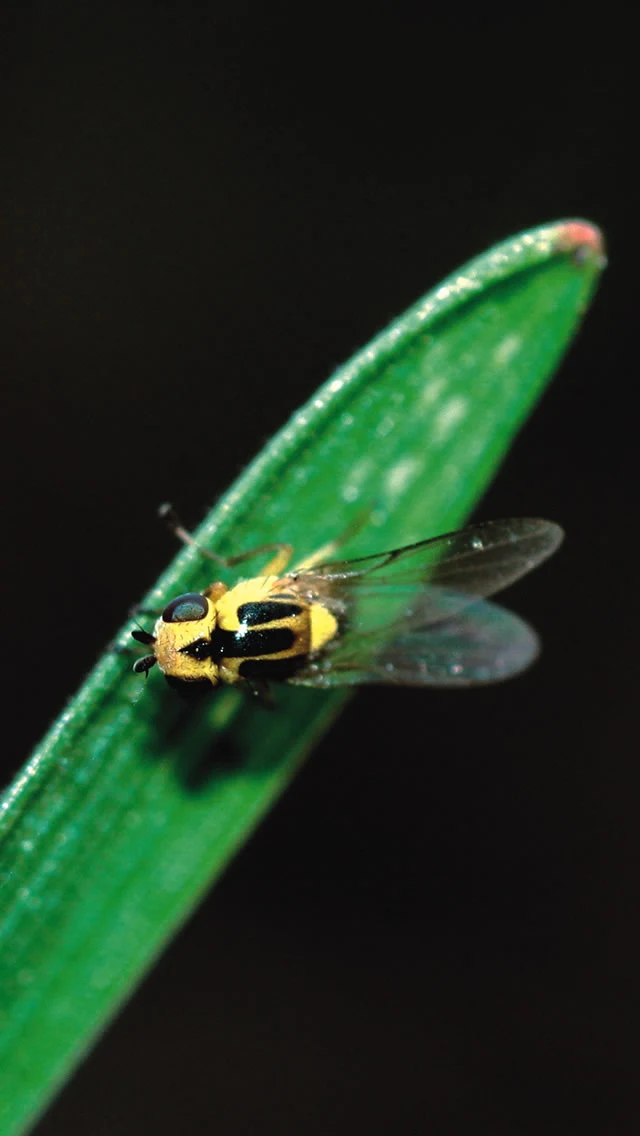
Adult gout fly

Close-up of gout fly pupa
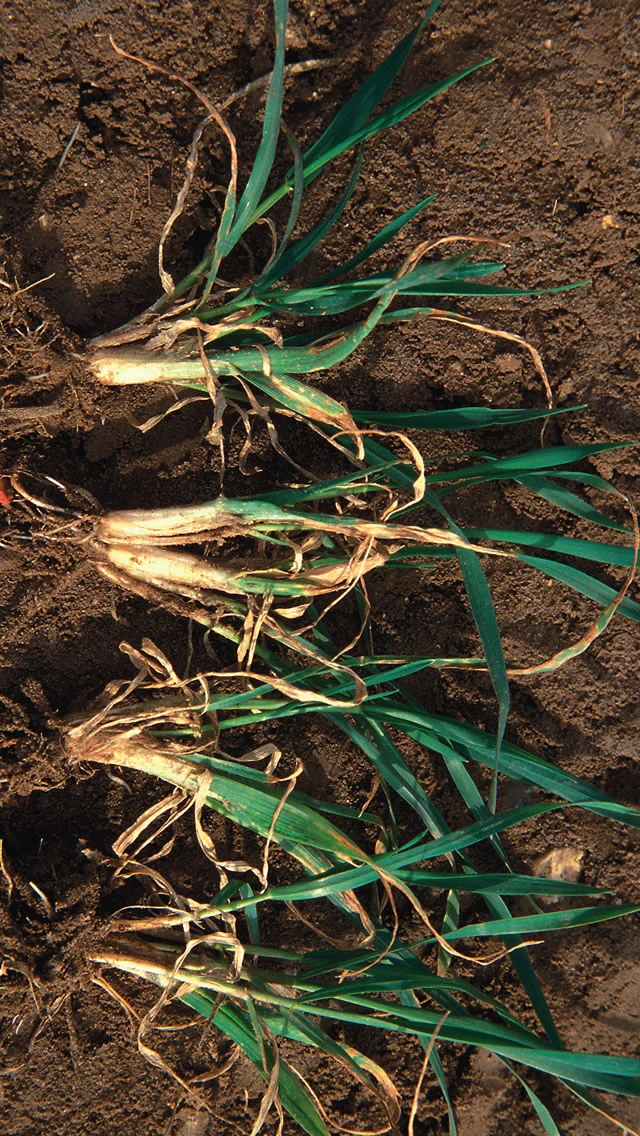
Gout fly damage
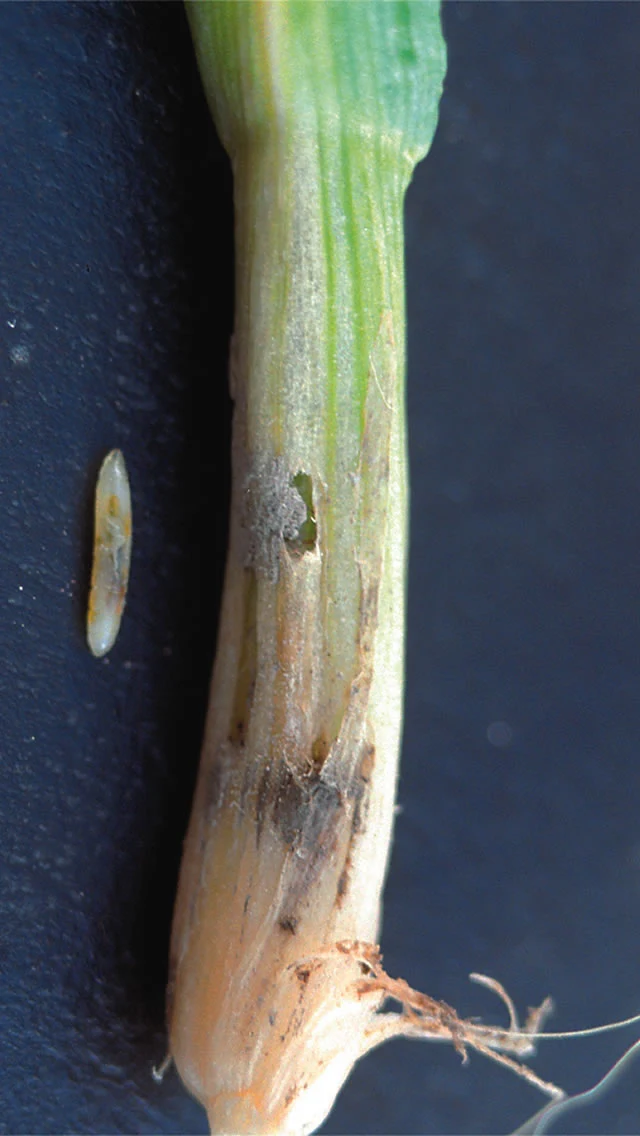
Gout fly maggot and damage
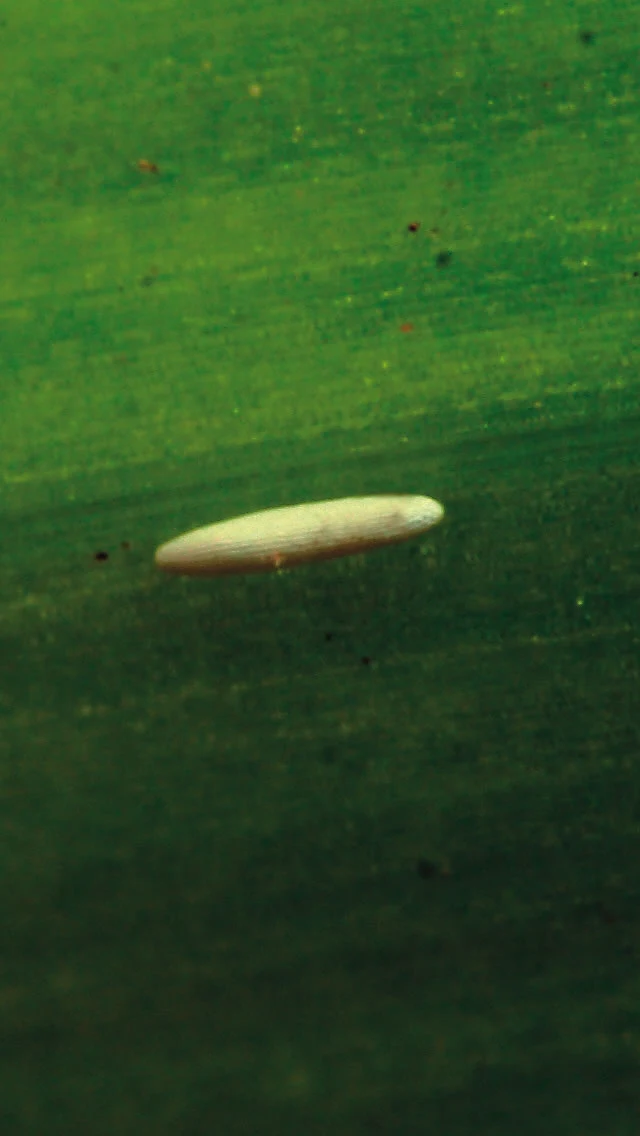
Gout fly egg


